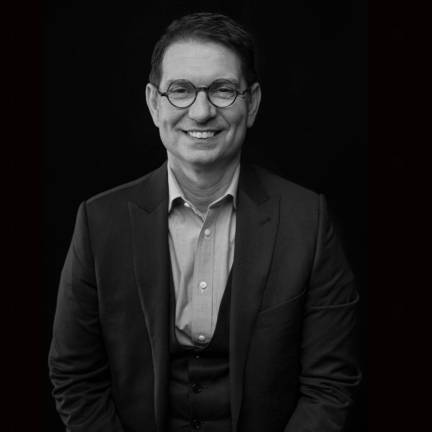Verona on the Hudson
Free performances by Teatro Grattacielo in Robert F. Wagner Jr. Park. Second in a series about small opera companies performing in Manhattan

On June 4 and 5, Teatro Grattacielo presents Riccardo Zandonai’s 1922 “Giulietta e Romeo” staged outdoors and free in Robert F. Wagner, Jr. Park at 20 Battery Place downtown. This 20th-century verismo work is based on the pre-Shakespearean Romeo and Juliet source stories of Luigi da Porto and Matteo Bandello and is less sentimental than the Gounod setting of Shakespeare’s tragedy. Zandonai’s opera has not been staged at any major theater in the New York area except for a semi-professional concert in the 1980’s in a much-reduced version. Teatro Grattacielo will present the work staged and in costume with a reduced orchestration of 30 players.
Stefanos Koroneos is a Greek-born baritone turned impresario (both in New York and Greece) who is the general and artistic director of Teatro Grattacielo, a company devoted to performing the rarer works in the late 19th century and early 20th century verismo repertory.
What attracted you to Riccardo Zandonai’s opera? What about the work have you come to admire and love?
Several factors. To quote Federica Fortunato, scientific director of R. Zandonai International Study Center in Rovereto, the story of “Giulietta e Romeo” is a metaphor of our time: love, tenderness and friendship opposed to the cold logic of blood and power.
Riccardo Zandonai’s rich score composed to a text by Arturo Rossato takes the listener on a journey through not only a rich musical texture but also through a very complex and interesting, libretto, often in Veronese dialect inspired by poet Berto Barbacini.
These two elements, together with the historical occasion of the 100th anniversary of the opera attracted me first.
So, there are surprises (Tybalt/Tebaldo is Juliet’s brother and not her cousin, no Mercutio, etc.) What are the other big differences between Zandonai/Luigi Rossati and Shakespeare? What should audiences expect and not expect?
The idea of the “original story” initially proposed by the Veronese Giuseppe Adami (1878 - 1946), who then retired from the project, was to follow an essential plot proposed by Italian “storytellers” such as Luigi Da Porto, trying to avoid the expansions of the horizon and the various complications subsequently proposed by William Shakespeare.
An all-Italian version translates into the more traditional vocal archetypes of Italian melodrama: a tenor and a soprano opposed to a baritone, and a few more or less secondary figures around them but without other key actors/singers such as Mercutio.
There is a beautiful and very long balcony scene in the first act. One of the most interesting parts and original parts of this opera is the role of “Il Cantatore” who appears in the third act singing invented medieval modalism, madrigals and poetry. Cantatore in a poor storyteller, just like Luigi da Porto, who represents the collective voice to the people.
Tell me about Zandonai’s musical style. How is it typical of verismo and atypical?
What has fascinated me is the opera has a very strong Art Nouveau musical language and style.
The lovers in “Giulietta e Romeo” seem more mature and worldly than the young teens of Shakespeare. It requires a trio of soprano/tenor/baritone who could also sing Puccini’s “Tosca”.
Absolutely! All these three roles are written for dramatic/spinto voices who can handle passaggio (the bridge between the upper and middle vocal registers) and high notes. Especially the part of Tebaldo, the baritone, is extremely high throughout the whole opera until his death. There are several other interesting, vocally and dramatically roles such as Il Cantatore and Il Banditore.
You began as an opera baritone and now produce performances – was that something you dreamed of?
This production is very related to my photographic view of the world. I remember growing up in rural Greece, where there was no art scene or any kind of artistic stimulus. All I had as a kid to get me going and to feed my dreams was my photographic memories made of images and places. This opera spoke to me from the very first moment because the drama and the location, together with the incredible score, lends to that vision.
Once invited by the Battery Park City Authority to bring a site-specific verismo opera to Battery Park, at the Wagner Wall, the choice for me was obvious.
Together with myself, an international creative team that comes from all over the world and a music team that has worked very hard we have reduced Zandonai’s orchestral score from 67 musicians to 30 without compromising its integrity. Because of COVID-19 we could not have a full orchestra, and who knows when we shall be able to have one with so many restrictions!!
More information and how to get tickets for “Giulietta e Romeo” available here: https://grattacielo.org/season/riccardo-zandonai-giulietta-e-romeo
“This opera spoke to me from the very first moment because the drama and the location, together with the incredible score, lends to that vision.” Stefanos Koroneos